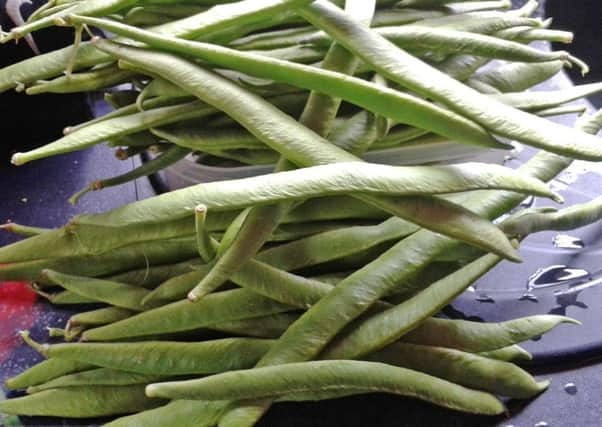GARDENING: Find a happy medium with runner beans
This article contains affiliate links. We may earn a small commission on items purchased through this article, but that does not affect our editorial judgement.


The aim is to strike a happy medium and enjoy this prettiest of crops.
Sow seeds now and harden off the young plants gradually and plant out when the risk of frost has passed, usually the beginning of June.


Advertisement
Hide AdAdvertisement
Hide AdWhen the soil has reached 12°C (54°F), seeds can be station sown in their permanent positions every two weeks until the end of July. Plant two beans at every point, then thin to the strongest.
Runner beans thrive in a rich deep, fertile soil in sun – dig in plenty of well-rotted manure, home-made compost, or even old newspapers or cardboard into the soil.
Add pelleted poultry manure or similar at the recommended rate. Leave the soil to settle for at least two weeks before planting.
The traditional way is to use a double row of 2.4m (8ft) tall canes tied near the top to form an A-frame, secured to a horizontal cane across the top.


When shoots have reached the top, pinch them out.
Advertisement
Hide AdAdvertisement
Hide AdRunner beans need lots of water – 5-9 litres per sqm (1-2 gallons per sq yd) every three to four days.
Beans are ready when the pods are about 15-20cm (6-8in) long, snap easily and the seeds are small and pale in colour. Pick regularly; every two or three days.
Ensure your soil is moist in June


To avoid problems with flowers not setting, ensure soil is constantly moist and mulch in June. Mist the foliage and flowers, especially during hot, dry weather.
Pinch out the growing tips of the plants when they are 15cm (6in) high – flowers formed on sideshoots usually set better.
Advertisement
Hide AdAdvertisement
Hide AdTry pink- or white-flowered cultivars, which usually set pods more easily in our dull summers.
JOBS TO DO THIS WEEK


Sow cauliflowers, purple sprouting broccoli and winter bedding plants.
Continue to harden off half-hardy annuals and tender plants.
Spreading and trailing plants such as Alyssum and Aubrieta can become tatty, so trim them back after flowering.
Advertisement
Hide AdAdvertisement
Hide AdPut supports in place for herbaceous plants for those like peonies that produce heavy blooms.
Lift clumps of forget-me-not once the display wanes, and before too many seeds are released.
Pinch out leading shoots on plants such as Chrysanthemum and Helianthus to encourage bushy plants.
Pot on root-bound plants.
Tie in climbing and rambling roses as near to horizontal as possible, to restrict sap flow, causing more side-shoots to grow along the stem, producing more flowers.
Put netting in place to protect all soft fruit from birds.
Advertisement
Hide AdAdvertisement
Hide AdEarth up potatoes when the shoots are 23cm (9in) high in order to prevent the new tubers going green, leaving 5cm (2in) of shoot uncovered so that the plant has enough foliage to continue growing.
For more on these topics, plus cook what you grow, traditional recipes, North East information, environmental news and more, log on to www.mandycanudigit.co.uk (now smartphone friendly), www.sunderlandecho.com/gardening, follow me on Twitter @MandyCanUDigIt or you can like me on Facebook at Mandycanudigit